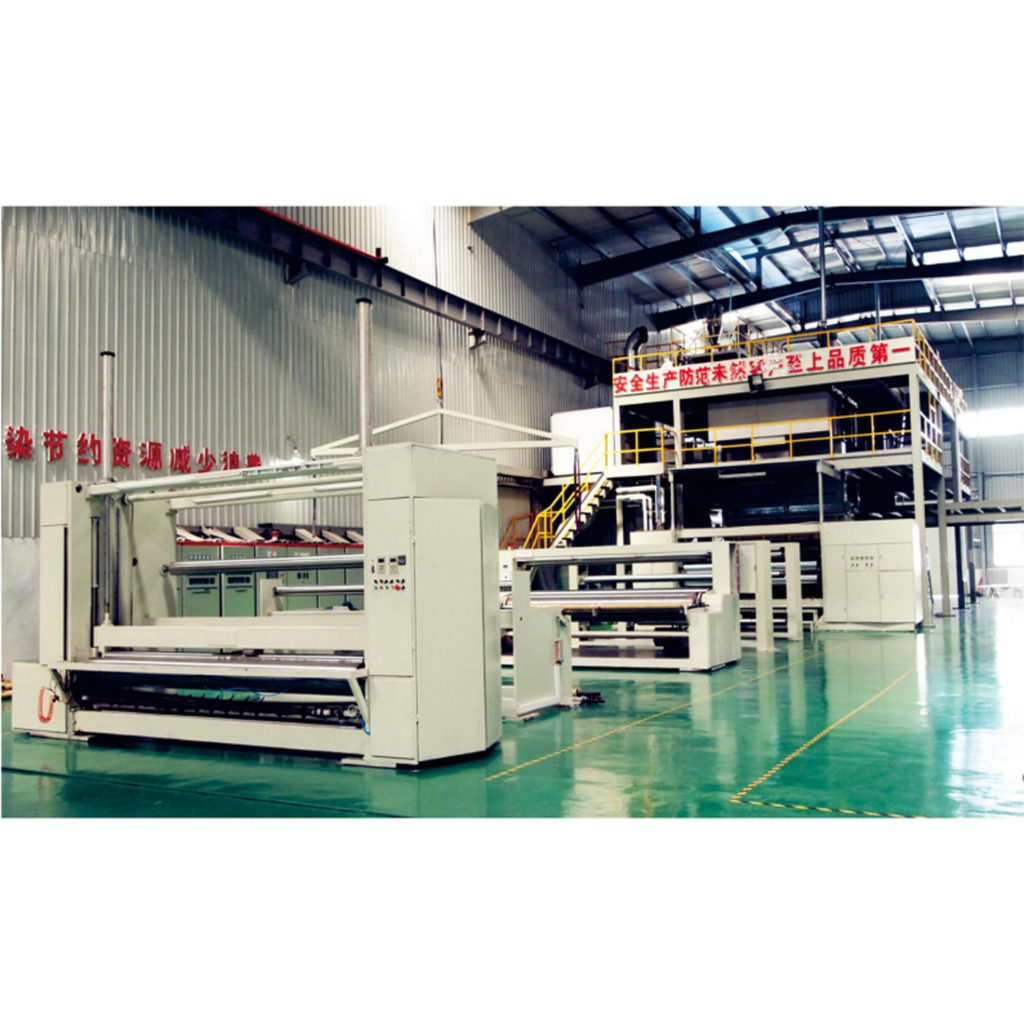O tecido não tecido Spunbond é criado usando máquinas especializadas que extrusam e colocam filamentos contínuos para formar uma teia não tecida. O processo spunbond produz tecidos não tecidos com orientação aleatória de filamentos, ideal for many applications that require strength and abrasion resistance.
The core machine types used for spunbond nonwoven fabric production are:
Spinneret Extruders:

Polymer resin is melted and extruded through fine holes called spinnerets to form continuous filaments. The spinnerets can have thousands of holes to produce many filaments simultaneously in a curtain or ribbon-like fashion.
Drawing Ovens:
The extruded filaments pass through heated draw air systems that cool and elongate the filaments, making them thinner and more uniform. This stretching increases the strength and mechanical properties of the filaments.
Laydown Head:
The drawn filaments are deposited onto a movable belt using a laydown head that controls filament density and geometry. The filaments land in a random orientation, becoming the nonwoven web.
Bonded Area Calenders:
The loose nonwoven web passes through heated calenders to bond the filaments at crossover points. This entanglement holds the web together and gives the fabric strength and integrity.
Winder And Rolls:
The finished nonwoven fabric web is wound onto large rolls for storage, transport, and further processing. Secondary finishing operations like water-jet needling may also be performed.
Spunbond nonwoven fabric make machine precisely controls filament formation, laydown, ligação, and winding to produce strong, uniform nonwoven webs ideal for fabrics, lenços umedecidos, geotêxteis, and medical gowns and drapes. Modern spunbond lines feature advanced technologies for higher throughput, consistent web properties, and reduced energy usage.
